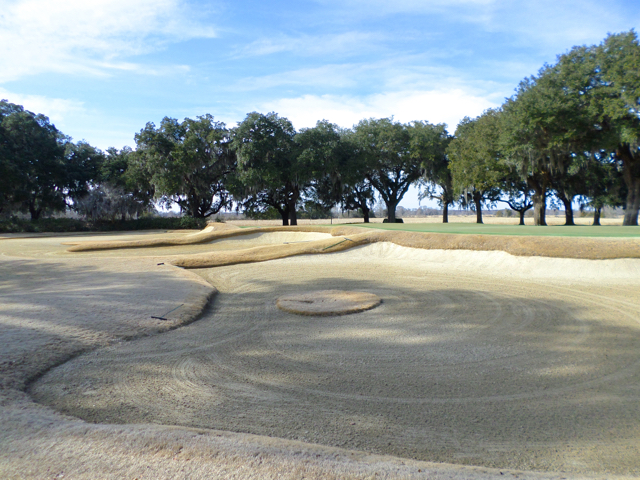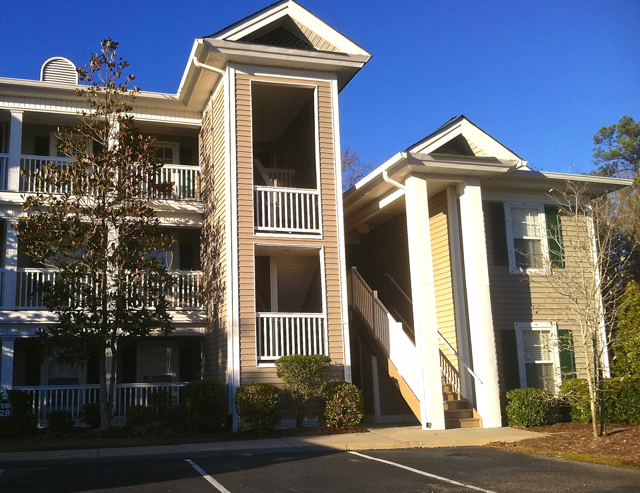Our friends in Connecticut think my wife and I are lucky since we are spending January and some of February on the coast of South Carolina; today, our New England friends are preparing for another foot of snow after the first storm dumped 18 inches last weekend. We do feel lucky, as long as the high winds and freezing temperatures back home do not cause a power failure that leads to frozen and burst pipes. But our power company is pretty good about posting notices online regarding power outages and, worst comes to worse, we can call on friends to check on the house.
Second homes require such accommodations, no pun intended. And among those are how one dresses for golf. On the Carolina coast in the dead of winter, you can expect high daytime temperatures typically in the 50s. Last week, I played three rounds in what any New Englander, upper Midwesterner or Canadian would consider ideal, early-spring conditions –- sunny, temperatures between 55 and 60, no rain (except for our final two holes one of the days). I was perfectly comfortable in a long-sleeved mock turtleneck shirt and wind vest for all three days.
Sub-60 degree temperatures may be considered too cold by some golfers. After all, temperatures in parts of Florida were a good 20 degrees warmer at times this week. And that got me thinking that there is no perfect climate in the Southeast, certainly nothing like San Diego, say, where the four seasons almost seem to merge into one mild season. Arguably the most highly rated golf course among Myrtle Beach's 100 layouts is Caledonia Golf & Fish Club in Pawleys Island.
Arguably the most highly rated golf course among Myrtle Beach's 100 layouts is Caledonia Golf & Fish Club in Pawleys Island.
My contention is that there are two annual seasons from about Wilmington, NC, to midway into Florida. But they are a different two seasons depending on the geography. From Wilmington to around Charleston, for example, I would describe the two seasons as cool to warm in winter and hot in summer. From Charleston south to about Jacksonville, FL, I'd characterize the seasons as warm and hot to very hot. And along the two coasts of Florida, I'd call the two seasons warm to very warm and very hot to stifling. In summer, a few Florida golf communities can seem like ghost towns because of the heat, and even the hardiest souls know to tee off by 8 a.m.
The nice thing for golfers interested in relocating south or purchasing a second home there is that all of these climates, with few exceptions, make it possible to play golf year round. From Wilmington down to around the Myrtle Beach area, you might lose 10 to 20 rounds of golf in winter due to cold temperatures or precipitation. From Myrtle Beach to around Hilton Head, count on maybe a week and a half's worth of temperatures cold enough to make you think twice about playing. In Florida, it will only be precipitation that derails your golf plans any time of the year.
Once you reconcile that there is no perfect climate on the east coast, golf in the 50s, especially if you spend a few minutes on the practice range before your round, can be more than tolerable.
*
I'm staying in the Myrtle Beach area for the next few weeks. Even if you aren't ready to commit to a golf home in the Carolinas, this is a good time to take advantage of low hotel and golf prices, easy-access to the 100 golf courses on the Grand Strand and to see if the mild winter temperatures are mild enough. During an idle drive beside the ocean in Myrtle Beach yesterday, my wife and I noted the many signs at oceanfront hotels for $49 rooms. Couple that with deeply discounted golf in the off-season and a few choice restaurants that remain open -– not to mention the outlet shopping malls, if you are into such things -– and you could create a pretty nice long weekend or week for yourself. And if during your visit you would like to look at golf communities and a few homes, let me know and I will help you build an effective itinerary of visits to golf communities. Contact me at Home On The Course. Pawleys Island's Founders Club, which longtime golfers in Myrtle Beach will recall as Sea Gull Golf Club, is notable for being the farthest south of the 100 golf courses on the Grand Strand, and for becoming one of nine area layouts now owned by a Chinese consortium.
Pawleys Island's Founders Club, which longtime golfers in Myrtle Beach will recall as Sea Gull Golf Club, is notable for being the farthest south of the 100 golf courses on the Grand Strand, and for becoming one of nine area layouts now owned by a Chinese consortium.
























